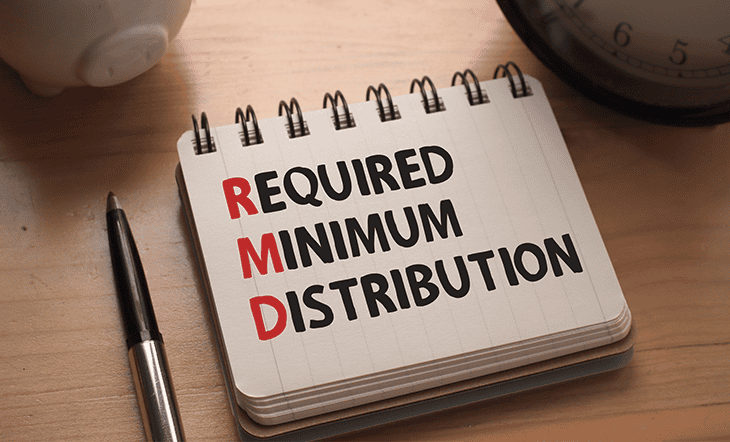Home > Personal Finance > The Importance of Calculating Your Personal Inflation Rate
The Importance of Calculating Your Personal Inflation Rate
Several things can impact your growth when you plan your finances and future goals. A new government policy on tax, your personal debt situation, poor financial planning, a downturn in the market, etc., can come in the way of your progress. Inflation is another phenomenon that can stall your advancement. While some of these factors may be in your control, some are beyond. You can always manage your debt, but if the economy is in a high inflationary period or the government increases the tax rates, there is little you can do to control things.
Inflation has been a worldwide concern in the recent past. Various events have led to a rise in prices. In March 2022, the U.S. recorded the highest inflation rate of 8.4% in 41 years. The annual inflation rate in the country further increased and was 8.6% for the last 12 months period ending in May 2022. This was the highest annual increase since December 1981, according to the data published by the U.S. Labor Department data on June 10. The inflation rate in the previous year, 2021, was 7%, and for the year 2020, it was 1.4%. From 2012 to 2022, the highest recorded inflation was only 2.3% in 2019. As you can deduce, the inflation rate has spiraled beyond expectations ever since, and its adverse effects on individuals have been extreme.
While the economy deals with inflation on a higher level, its impact on regular households is often not spoken about in detail. Inflation disrupts many families and forces people to make cuts, compromise on their lifestyles, and reduce their savings rate, which ultimately affects their future. This makes it essential to know more about your personal inflation rate. If you wish to understand about personal inflation rate and how it can affect you, reach out to a professional financial advisor who can advise you on the same.
Find out more about how to calculate personal inflation rate and use it effectively in your financial planning.
Table of Contents
What is inflation?
Inflation measures the rate at which prices increase over a given period of time. Inflation is decided according to public spending habits on products and services that can include essential items like food, education, fuel, medicines, as well as loans, mortgages, etc. In simple words, inflation is the reduction in the value of money. If you could spend $10 on a pair of pants in 2015, you could likely pay $20 for them right now. This $10 increase in the price of clothing occurs due to inflation.
Inflation can be a good thing for the economy as it helps businesses grow and makes sure people save and make better finance-related choices. It can be favorable for the economy’s growth. However, extreme inflationary periods like the one at present can be detrimental.
How is inflation calculated?
Inflation is calculated by the Bureau of Labor Statistics (BLS) on the basis of the Consumer Price Index (CPI). CPI is a basket of goods and services. It can also be calculated per the Personal Consumption Expenditures Price Index (PCE). Here’s how this is done:
1. Consumer Price Index (CPI):
BLS gathers data from several different consumers across the country by tracking the spending habits of thousands of Americans on multiple goods and services. This helps BLS understand the changes in price trends over time. Prices generally fluctuate because of demand and supply. This can be impacted due to seasonal changes, publicity, changing needs of the generations, etc. BLS uses the average cost of a specific basket of goods for a particular time frame and compares it to the average cost of the previous month. A rise in prices indicates inflation, and a drop means deflation.
The CPI is also used to calculate the cost-of-living adjustment (COLA) for Social Security benefits, as well as by companies when calculating employee salaries.
2. Personal Consumption Expenditures Price Index (PCE):
PCE uses a similar approach where the BLS takes into account a basket of goods and services to determine the spending habits of Americans. However, instead of reaching out to the customers, PCE takes business reports from companies and analyses the prices the goods and services are sold for. PCE can offer a more conclusive image of inflation as it also takes into consideration medical care, such as employer-provided insurance, Medicare, etc. PCE also reports changes in spending patterns. For instance, people may switch to pork and chicken when beef prices increase. This is why PCE remains the most significant measure of inflation for the Federal Reserve.
What is the personal inflation rate, and how to calculate it?
Your personal inflation rate is the inflation rate specific to your purchases. While the BLS takes thousands of goods and services, not all of these make it into your shopping list. So, it is crucial to calculate personal inflation rate to know how the rise in prices affects you individually. For instance, if you are a vegetarian/vegan, an increase in beef prices will not impact you. The rising interest rates will not bother you if you are not in the market for a home loan. And if you already own a house, the rising costs of real estate can actually be an advantage for you as they increase the value of your real estate asset.
Calculating your personal inflation rate can help you keep a tab on the products and services you actually spend on. To calculate personal inflation rate, you need to go through the summary of all your transactions made in the previous year. You can refer to your debit and credit card statements. Make a list of all recurring expenses like insurance premiums, groceries, utility bills, clothes, school or college fees for your children, gas, etc. Now, do the same for the current year. The difference in the prices will help you determine your personal inflation rate and help you create a reasonable budget.
For instance, if you spent $3,000 a month on groceries last year but spent $3,700 a month on the same items this year, your inflation rate will be 18%. This does not mean the country’s inflation is as high as 18%, but your personal inflation rate can be. Similarly, your individual inflation rate can also be lower than the country’s average. Irrespective of the result, this exercise can give you a better insight into managing your money and saving for the future.
Why is the personal inflation rate critical for retirement?
Using a personal inflation calculator for retirement is essential to planning your retirement. Retirement savings are a limited pool of money, and inflation can eat into your corpus if you do not plan well. Understanding your unique spending habits can help you save adequately. For instance, the CPI for food increased by 8.8% and 70.1% for fuel between March 2021 and 2022. Now, you would need to account for the inflation in food as it is a necessity, but you may overlook the inflation in fuel if you use an electric car. Having said this, it is not so easy. Fuel prices impact every other segment by increasing transportation costs. So, a hike in fuel can lead to a hike in food, clothes, medicines, electronics, and others.
Insurance is a significant financial asset in retirement. The monthly premium for Medicare Part B in 2022 is 14.6% more than the previous year. Moreover, the COLA for Social Security benefits is 5.9% in 2022. This is less than the inflation rate, which is more than 8%. COLA helps adjust the cost of inflation for retirees, but with inflation rising at a rapid pace, the COLA loses its power.
Keeping a tab on these can help you make a list of things you will likely need in retirement and accordingly save your money. This enables you to understand the value of your savings in the future and the adequacy of additional benefits like Social Security, and what you need to do to overcome the gaps. This ensures that you do not run out of money and have enough funds for your golden years.
SPONSORED WISERADVISOR

Choosing the right financial advisor is daunting, especially when there are thousands of financial advisors near you. We make it easy by matching you to vetted advisors that meet your unique needs. Matched advisors are all registered with FINRA/SEC. Click to compare vetted advisors now.
Here are some things that can help you minimize the impact of inflation:
1. Invest your money in inflation-beating instruments:
Stocks, equity mutual funds, 529 education accounts, 401(k), and Individual Retirement Accounts (IRAs), among several others, can help you build your savings while countering inflation. These investments are designed to offer long-term inflation-adjusted returns so your money does not lose its value. Since inflation is inevitable, it becomes essential to invest your money in such instruments. Cash savings or bank accounts do not fare well in the face of inflation. Therefore, be mindful of inflation from a young age and let your money compound and counter inflation over a long-term horizon.
2. Save more than you spend:
While it can be hard to cut down on essential items, you can lower spending on non-essential items like extra clothes, bags, shoes, dining out, taking cabs, etc. It may help to scrimp when the country is going through high-inflationary periods. For instance, consider taking public transport over cabs or driving your own car when fuel prices are high. Subways and buses may take more time but can help you save money. Eating in versus dining out, using debit cards over credit, conserving electricity, etc., can all help you lower your monthly expenditure.
3. Keep your savings and investments rate steady:
No matter how bad a hit you take from inflation, cutting down on your savings and investments rate is the last thing you must resort to. The first step should always be to lower your expenses. Ideally, a savings rate of 25% to 30% is ideal to meet your short and long-term goals. This money can be invested in retirement accounts, stocks, bonds, mutual funds, etc., so that your future is financially secured. Cutting down on your savings rate puts your future in jeopardy. If you do not have sufficient funds for retirement, you will find it extremely hard to get by. Running out of money in your lifetime will make you dependent on your children or grandchildren and may affect your access to healthcare.
4. Use a retirement withdrawal calculator with inflation:
Planning your retirement withdrawals is essential to ensure that your saved-up money is well accounted for and used smartly. For instance, while Social Security checks may be impacted by a low COLA, delaying your withdrawals till the age of 67 gets you an extra 108% of the monthly benefit. If you further wait till 70, you get 132%of the monthly benefit. Your withdrawal strategy can help you lower the impact of inflation and increase your checks. So, be mindful of when you draw your money and use a retirement withdrawal calculator with inflation to make better decisions.
5. Control impulse buying:
Impulse purchases, even when made once in a while, can sway your budget. An unplanned car purchase or getting an expensive electronic item can come in the way of more important things. It is essential to plan your purchases so you can get the best price. Planning also eliminates the chance of buying something you do not need. For instance, buying a new phone because of peer pressure can upset your budget, but taking care of your phone and using it for some years can help you save money. Try to take care of your things so you do not feel the need to buy new products or spend on their maintenance. Picking good quality products is also essential as they lower the long-term cost spent on a product.
To conclude
The Federal Reserve tries to keep the annual rate of inflation closer to 2%. However, sometimes things can go out of hand. The war between Ukraine and Russia and Covid-19 were unexpected events that shook the world one after the other. The economic repercussions, as a result, have been drastic. However, while the Federal Reserve tries to bring inflation down, you too must try to keep your personal inflation rate low. Knowing how to calculate personal inflation rate, using the inflation calculator for retirement, planning in advance, and being mindful of your expenses can be some measures that can help you counter inflation.
However, you can consider hiring a professional financial advisor if you need more assistance. Use Paladin Registry’s free advisor match tool and get matched with 1-3 qualified advisors who may be able to help you with your unique financial goals and requirements.
To learn more about the most suitable tax-saving strategies for your specific financial requirements, visit Dash Investments or email me directly at dash@dashinvestments.com.
About Dash Investments
Dash Investments is privately owned by Jonathan Dash and is an independent investment advisory firm, managing private client accounts for individuals and families across America. As a Registered Investment Advisor (RIA) firm with the SEC, they are fiduciaries who put clients’ interests ahead of everything else.
Dash Investments offers a full range of investment advisory and financial services, which are tailored to each client’s unique needs providing institutional-caliber money management services that are based upon a solid, proven research approach. Additionally, each client receives comprehensive financial planning to ensure they are moving toward their financial goals. CEO & Chief Investment Officer Jonathan Dash has been covered in major business publications such as Barron’s, The Wall Street Journal, and The New York Times as a leader in the investment industry with a track record of creating value for his firm’s clients.
Other posts from Jonathan Dash
Here’s Why Every Tax Season is a Good Time to Revisit Your Financial Investments
The tax season is the perfect time to take a closer look at your financial investments. The 2025...
3 Key Financial Habits That Set Wealthy Retirees Apart
The wealthy may seem to have it all figured out, but their success is the result of years...
Things You Should Know About RMDs if You Are Turning 73
Retirement accounts like the 401(k) and the Individual Retirement Account (IRA) are broadly classified as traditional, and Roth based on their taxability....




